By William E. Welsh
As the sun dipped low in the west on August 13, 1799, Russian Field Marshal Count Alexander Suvorov rode slowly south towards the heights on which was perched the walled town of Novi, in Italy’s Piedmont region. He had dressed that afternoon in accordance with the scorching heat of the Mediterranean climate. Leaving his jacket behind, he donned a white shirt, breeches, and a pair of old boots. Accompanied by two battalions of jagers to protect him, he rode through the cultivated land to a point that would allow him to assess the strength of his enemy. Ordering the jagers to lie down in a field of barley so they would not draw fire, the 69-year-old commander, who had never been defeated in battle, peered through his field glass in an effort to see as much of the enemy’s position as possible.
The town, with walls that dated back to medieval times, was perched 100 feet above the vineyards and farm fields on the plain where Suvorov was making his reconnaissance. He found that French General Barthelemy Joubert, the commander-in-chief of the French First Republic’s Army of Italy, had chosen a superb defensive position.
A detachment of French pickets eventually spotted him and his escort, forcing the marshal and his bodyguards to make a rapid retreat to avoid a skirmish. Suvorov, unsure whether Joubert would fight at Novi or continue 11 miles north to his objective of Tortona, decided to contest the ground on which he stood. So that night, the Russian marshal shifted his field headquarters to a point just two miles north of Novi so he could better direct his forces as the situation might dictate.
After the fall of the Western Roman Empire in the 5th century, the Italians had endured a steady stream of invaders who vied for control not only of the holy city of Rome, but also the wealth of the mercantile towns of northern Italy. The Lombards had swept down from Germany in the Dark Ages, the Byzantines and Normans had established footholds in southern Italy, and the French had battled Spanish and Imperial troops for control of the prosperous region of Lombardy during the Renaissance. The strife continued after the French Revolution, when General Napoleon Bonaparte drove the armies of the Austrian monarchy out of northern Italy in a brilliant campaign in 1796.
The French Directory, the five-person governing council of France’s constitutional government, empowered Bonaparte to negotiate on its behalf. The following year Bonaparte drew up the terms of the Treaty of Campo Formio. The treaty required the Austrians to recognize the existence of the newly established French satellite states in Italy and accept the transfer of former Austrian territories into French hands in Italy, Germany, and the Lowlands. Through the treaty, the French also obtained one third of Veneto and the northern quarter of the Papal States. The unfavorable treaty left Austria with a nagging desire to recover the territory in northern Italy it had lost to France.
The French-sponsored satellite states, including the Cisalpine, Genoese, Ligurian, and Roman republics, created in Italy during the War of the First Coalition, served as buffer zones that protected France’s southern frontier. The creation of these French protectorates sparked the War of the Second Coalition against the Great Powers of Austria, Britain, and Russia. The coalition also included the lesser German states, Naples, Portugal, and Turkey.
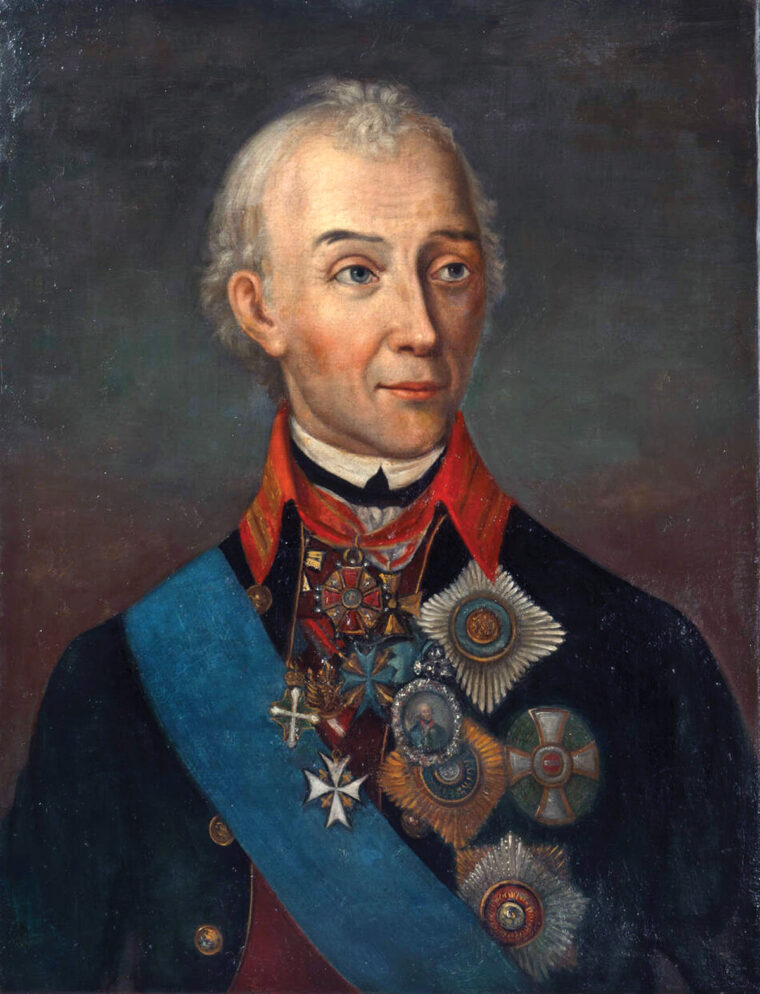
One of the precipitating events to the War of the Second Coalition, which officially began in December 1799, was the invasion of the French-sponsored Roman Republic by Austrian Lieutenant Marshal Karl Mack’s Neapolitan Army the previous month. He entered Rome, where he restored papal authority. General Jean-Etienne Championnet, who commanded the French Army of Rome in central Italy, counterattacked and retook Rome on December 12. Championnet, although heavily outnumbered, succeeded in crushing the weak Neapolitan army. He drove its government from mainland Italy and established yet another French-sponsored protectorate in southern Italy, this one called the Parthenopean Republic.
After Championnet’s successful campaign against the Neapolitan forces, the action in Italy then shifted north. General of Division Barthelemy Joubert marched west from Milan into Piedmont, where on December 5 he deposed the King Charles Emmanuel IV of Sardinia-Piedmont. The swift action gave France control of Piedmont’s valuable fortresses and arsenals, which further solidified France’s grip on Italy.
Bonaparte’s power had risen considerably by the conclusion of the War of the First Coalition. He set sail with an expeditionary army in May 1798 on a quest to annex Egypt in order to further France’s mercantile interests by giving it an overland route to India. A large French fleet bore his 30,000 troops to Egypt, which at the time was a province of the Ottoman Empire.
When British Vice-Admiral Horatio Nelson sunk the French fleet at anchor in Aboukir Bay on August 1-2, Napoleon and his army became stranded. They would not be able to easily return to France if they could return at all. Six months after Bonaparte had set sail for Egypt, the War of the Second Coalition erupted in Europe.
Tsar Paul mobilized against the French in early 1799 because he saw Bonaparte’s Mediterranean campaign as a threat to its Mediterranean interests. Bonaparte’s invasion of Malta in mid-June 1798, which occurred while he was en route to Egypt, had greatly angered Tsar Paul. Because of this, he was eager to go to war with the French. As part of his conquest of Malta, Bonaparte had driven the Knights of Malta from their base, confiscated their treasury, and desecrated the tombs of the rulers of Malta.
The Allied objective was to defeat the French in order to undo the Treaty of Campo Formio, which had upset the balance of power in Europe by giving the French a huge territorial advantage on the Continent.
The Austrians desperately wanted to regain control of northern Italy and the destruction of the Cisalpine Republic, which comprised Milan, Modena, and the western third of the former Republic of Venice. At the outset of the conflict, France had 200,000 troops in the field arrayed in seven armies. Of France’s 100,000 troops in Italy, 62,000 were deployed in northern Italy.
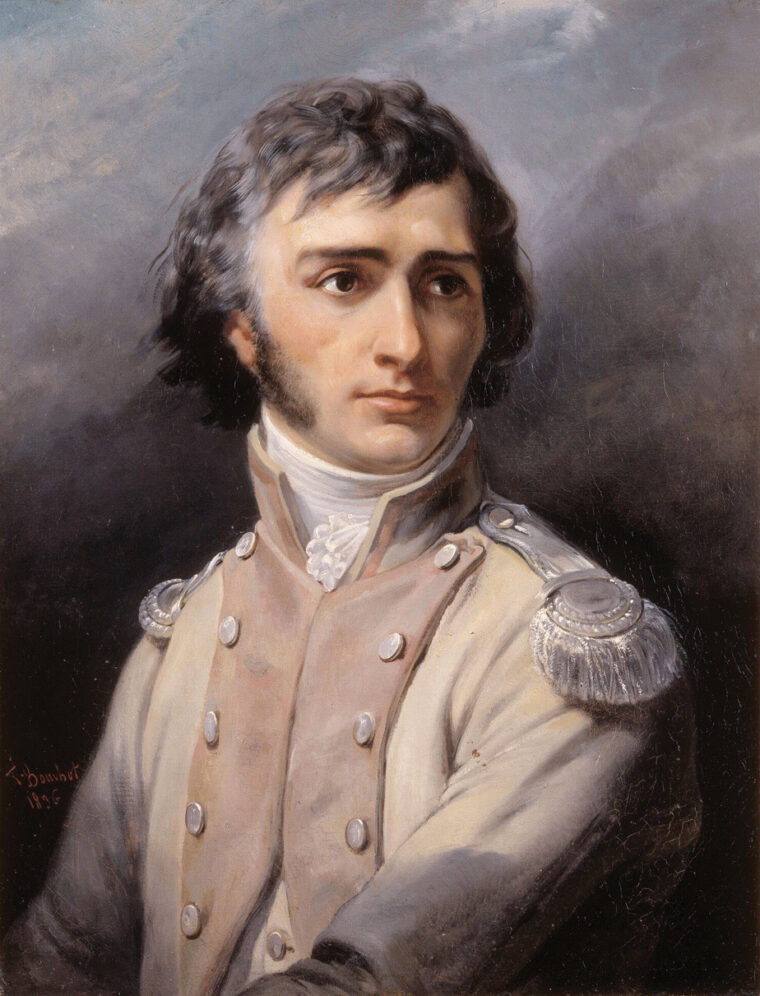
The Great Powers decided to make their main thrust in Northern Italy. The Austrians, who lacked a talented commander-in-chief, were searching at the beginning of the War of the Second Coalition for a gifted foreign commander to command their forces, since they had no commander who really stood out. Morton Eden, who was the British Ambassador to Austria, suggested Suvorov.
Tsar Paul I initially was reluctant to give the assignment to Suvorov because he found the general to be eccentric and impulsive, but since the Austrians insisted upon him, the tsar obliged them. The tsar sent a large army to Italy and dispatched Suvorov to take command of the joint Austro-Russian army in the Italian theater. Suvorov had proven himself to be an aggressive, shrewd, and gifted commander in wars with Poland and Turkey during the reign of Paul’s predecessor, Catherine the Great.
Suvorov set off in a carriage from St. Petersburg in late February 1799 with a Cossack escort and a war chest to cover expenses above and beyond what the Austrians might supply to him. The Russian vanguard consisting of 20,000 troops under the command of Lt. Gen. Andrei Rosenberg had departed several months earlier, but it was conducting a painfully slow march in which it evidently had to halt frequently to obtain supplies. Rosenberg’s vanguard included seven regiments of musketeers, one regiment of grenadiers, four grenadier battalions, two Jager regiments, six regiments of Cossacks, and an artillery train. Tsar Paul planned to send another 35,000 Russian troops shortly afterwards. It marked the first time that a Russian army would wage war in Central Europe.
The French had attacked first in northern Italy. General of Division Barthelemy Scherer, a mediocre commander, commanded France’s 41,000-strong Army of Italy. He attempted to capture Verona from the Austrians in March 1799. After some skirmishing near Verona, Scherer withdrew west in the face of Austrian Maj. Gen. Paul Kray’s 46,000 Austrian troops. Scherer became unnerved when he learned that Maj. Gen. Heinrich von Bellegarde’s 14,500 Austrian troops stationed in Tyrol were sweeping down from the north to assist Kray.
Kray won a decisive victory over Scherer at Magnano south of Verona on April 5. Scherer had poorly handled his three divisions by sending them forward too far apart to support each other. By that time, Scherer had lost the confidence of his subordinates and many of the Italian and Swiss auxiliaries in the French ranks promptly deserted. Scherer left 12,000 troops behind to garrison Mantua and then fled west with the 18,000 troops remaining in the Army of Italy. His army had suffered upwards of 15,000 casualties in its clashes with the Austrians. As he waited for the Austrians to resume their advance, Scherer spread his army thin over a 70-mile front.
Suvorov had arrived at the battlefront in Veneto the day before the clash at Magnano. He was joined five days later by the septuagenarian Austrian Marshal Michael von Melas, who had been sent to assume overall command of the Austrian forces serving under Suvorov. Kray, who had received a promotion to Feldzeugmeister, the equivalent of a lieutenant general, remained with the army to serve under Melas.
Rosenberg’s column finally arrived in Vicenza on April 14. Suvorov initially had 62,000 troops, of which 42,000 were Austrian. Suvorov had a falling out with Rosenberg, who had run afoul of the marshal for not executing his orders promptly, and he replaced him with Maj. Gen. General Peter Bagration, who was much younger than the elderly corps commander. Bagration’s troops were given the honor of serving as the advance guard in the upcoming campaign.
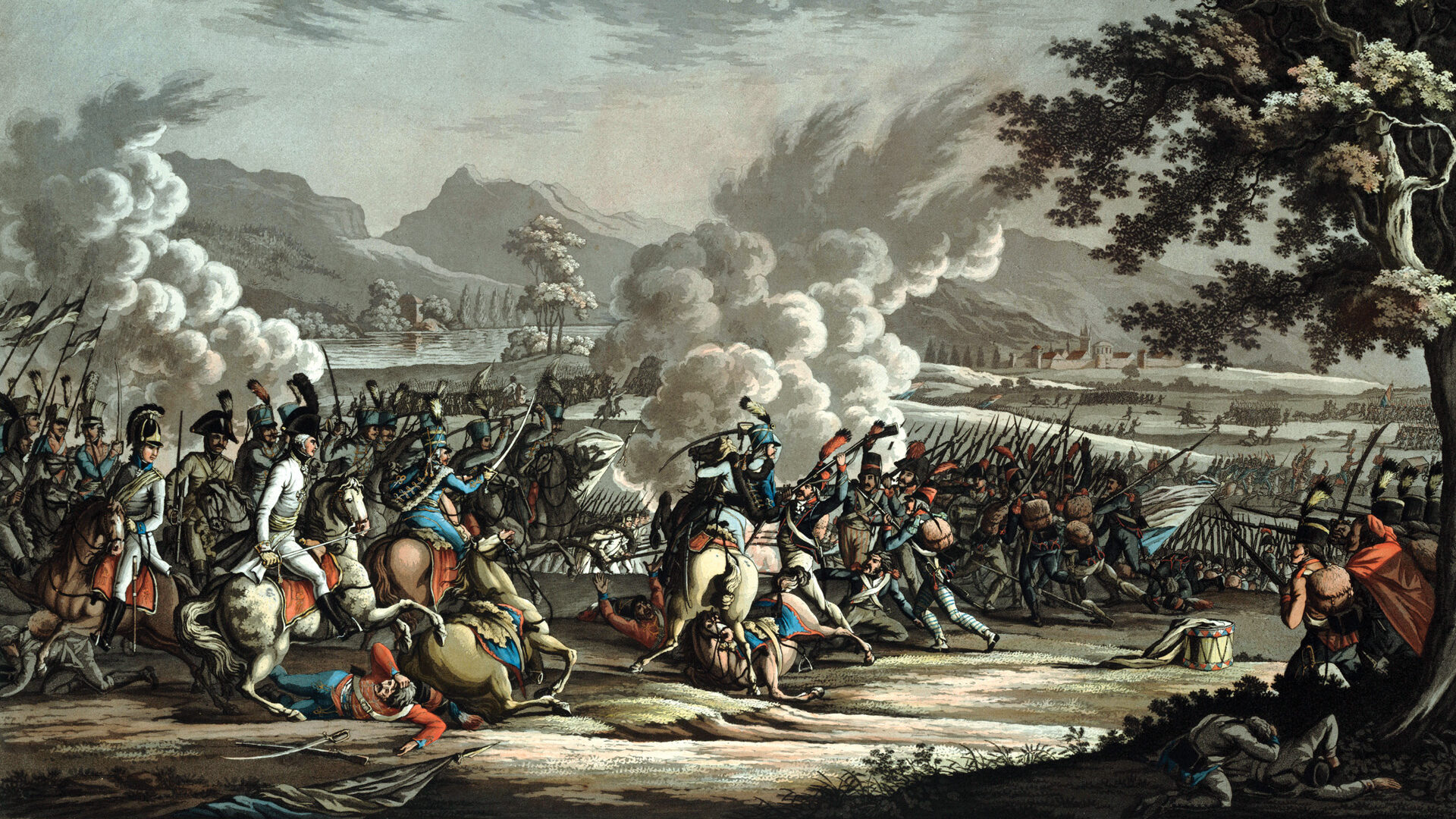
“I have come to free Italy from the yoke of the godless and the French,” Suvorov told his generals upon meeting with them the first time. He instructed General Johann Gabriel Chasteler, his Austrian chief of staff, to put Russian officers in charge of Austrian units. Suvorov was an unabashed advocate of shock tactics and giving the enemy the cold steel of the bayonet. It is no surprise that he preached such tactics, for they were well suited for the raw but exceedingly brave Russian conscripted masses that lacked some of the more erudite infantry tactics practiced by the French. The Russians attacked in small columns moving rapidly over rough terrain.
Suvorov advised his Austrian generals to concentrate their forces, always act on the offensive, and make rapid marches and bold attacks. He also advised that they avoid sieges unless the objective was an enemy arsenal. In regard to Mantua, the Russian marshal had no intention of becoming bogged down in a time-consuming siege of that city. He would bypass the fortress, which was located in eastern Lombardy, and besiege it at a later date.
The French facing Suvorov soon had a newly appointed commander. The Directory ordered General of Division Jean Moreau to replace Scherer, who was recalled to France. Scraping together as many troops as possible, Moreau assembled 20,000 troops behind the Adda River, but he faced 50,000 Austrian and Russian troops. Moreau was at a further disadvantage because his troops had become dejected and demoralized by the losses and retreats they had suffered under Scherer’s poor leadership.
Suvorov intended to turn the French northern flank on the Adda. Moreau organized his troops into three corps, one at Brivio and Trezzo in the north, one in the center between Trezzo and Cassano, and one in the south between Cassano and Lodi. The Allied attack began on April 26, with the three Russian divisions trying to force a crossing at Brivio. Although they took heavy losses, the Russians gained a foothold on the far bank. The fighting was particularly vicious, though, in the center at Trezzo, where the Austrians had crossed on pontoon bridges.
Once they had crossed the river, the Austrians suffered heavy casualties, for the French had strong defensive positions. The French line infantry and jagers benefitted from the superb cover afforded by vineyards on the slopes leading down to the river plain. Stone walls served as natural breastworks that enabled the French musketeers to repulse multiple charges by the Austrians. However, pressure from the Russians working their way south dislodged the French, and they undertook a general retreat. They did not stop to defend Milan but continued west toward Pavia on the Ticino River.
Although the Allies had lost 2,000 in the heavy fighting in what became known as the Battle of Cassano, the carnage cost Moreau 10,000 casualties. The Allies captured Milan on April 29. “The progress of the marshal has been brilliant beyond the most sanguine expectation,” wrote The Times of London of Suvorov’s initial victories.
Before his advance on Milan, Suvorov had detached Kray with 23,000 troops with orders to contain the French forces in the Allied rear at Mantua and Peschiera. When Kray informed the Hofkriegsrat, which was the Austrian Supreme Council of War in Vienna, of this mission, he received orders to undertake a formal siege of Mantua. For this purpose, he was given 17,000 additional Austrian troops. Suvorov became irate when he learned that Kray was going behind his back to the Hofkriegsrat. This put Suvorov in the unenviable position of having his authority diluted by Austrian military staff.
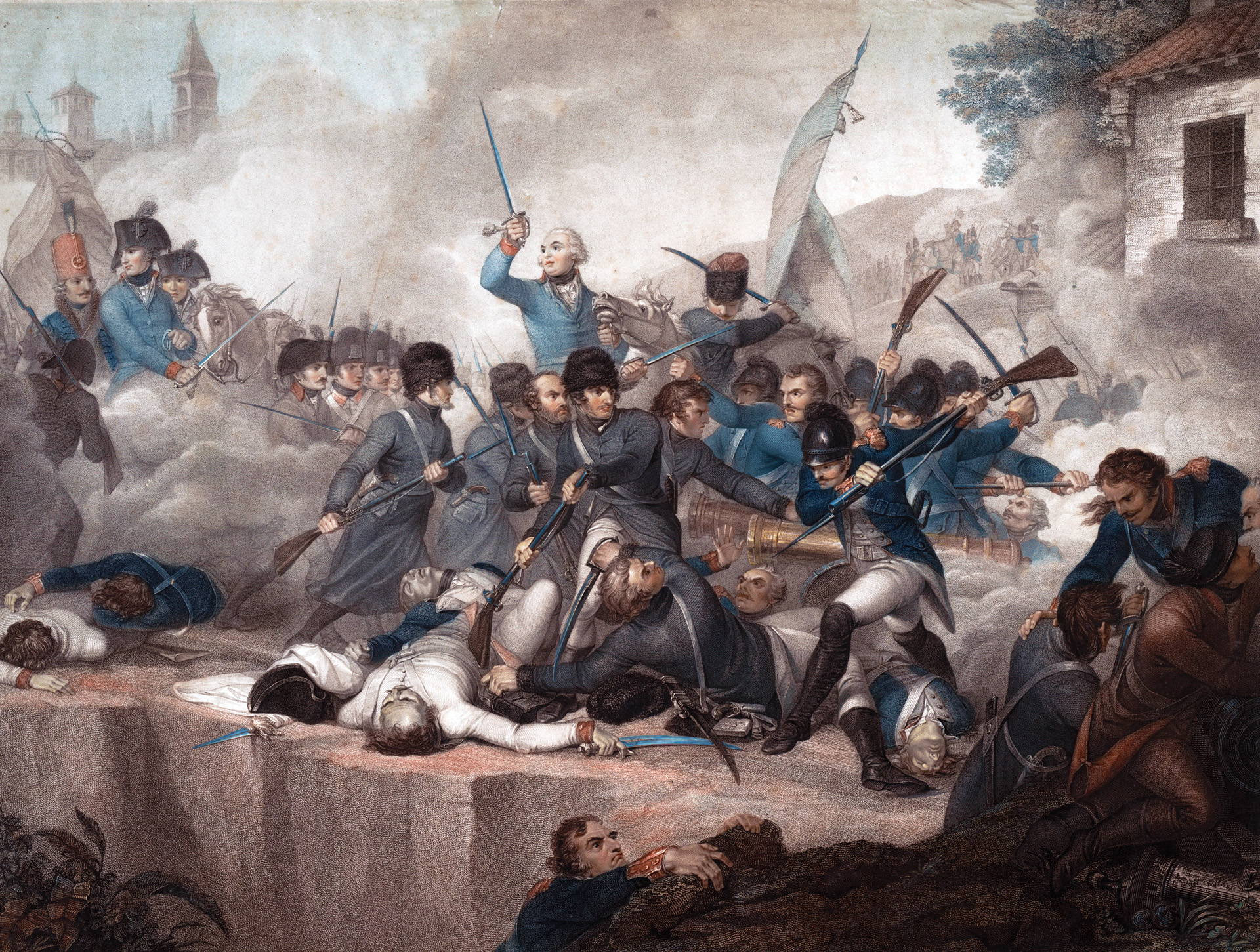
After capturing Milan, Suvorov marched west to Turin, which he captured on May 26. Although the Hofkriegsrat had not authorized an advance beyond Lombardy, it initially refrained from restricting his strategic movements.
To keep the French armies of Italy and Naples from uniting against him in June, Suvorov countermarched his 51,000 troops to the south bank of the Po River to engage General of Division Étienne Jacques-Joseph-Alexandre MacDonald’s 35,000-strong Army of Naples on the banks of the Trebbia River. Suvorov took up a defensive position in late July on the open plain north of Novi in eastern Piedmont to engage French General of Division Barthelemy Joubert’s 35,000 troops marching north from Genoa across the Ligurian Apennine Mountains to engage him.
The French Directory had dispatched Joubert in the summer to Genoa to take command of Moreau’s army and restore French fortunes in Italy, which had unraveled in the face of Suvorov’s strategic genius. Joubert had earned a reputation as a bold and talented general, serving under Napoleon Bonaparte during his 1796-1797 campaign in Italy. The 30-year-old French commander dutifully arrived in Genoa on August 4. Accompanied by Moreau, Joubert marched north to retake Tortona as a first step in undoing Suvorov’s conquests.
Suvorov had divided his forces after Trebbia to complete the capture of both Alessandria and Tortona. Once he had accomplished these objectives, he intended to isolate and destroy Moreau’s Army of Italy in Genoa. But he intended to wait until Kray had completed his protracted siege of Mantua. The siege of Mantua dragged on until July 30. Afterwards, Kray marched his 40,000 troops west to join Suvorov.
Before Joubert arrived in Genoa, 10,000 French reinforcements had arrived in the city, which reinvigorated the Army of Italy and increased it to 35,000 troops. Since the 19,000 troops of the French Army of the Alps conceivably could invade the Piedmont, Suvorov sent 14,000 Austrian troops to garrison western Piedmont and another 11,000 Austrian troops to block the western passes through the Alps.
Joubert dashed a plan that Suvorov had drafted to destroy the Army of Italy when the French commander led his army north to Novi. He probably was not aware that he was heavily outnumbered, for once Kray joined Suvorov, the Austro-Russian army would have 51,000 troops.
Novi was situated on the northern edge of an expansive plateau that was the northeastern outcrop of the northern edge of an outlying plateau of the Ligurian Apennines known as Monte Mesma between the Lemme and Scrivia rivers. Joubert sent his Army of Italy north in two large columns.
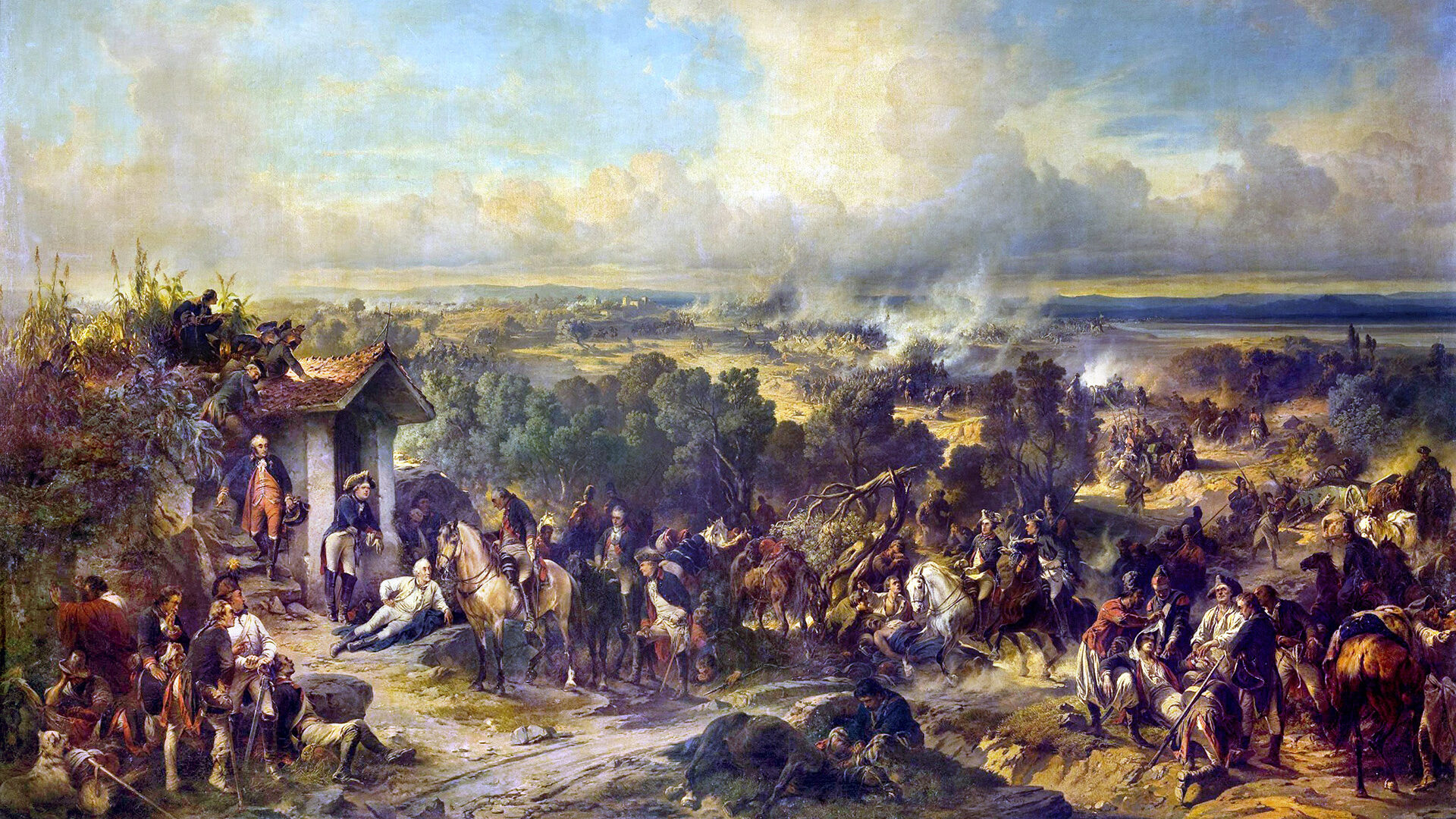
The French marched in two widely separated columns through the mountains. General Catherine-Dominique de Perignon led the western column on a circuitous route. It brushed aside an Austrian detachment at Acqui before continuing on its way to Novi. Having a more direct route, General Laurent de Gouvion Saint-Cyr marched his eastern column directly north from Genoa across the Bochetta Pass to Gavi and onto Novi.
The two columns arrived on the northern summit of the plateau on August 13, but they did not consolidate their positions until the following day. Perignon’s left wing deployed on the northern edge of the plateau between the town of Pasturana and Novi, and Saint-Cyr’s right wing occupied Novi and the ground east of the town. Joubert assigned General Jan Henryk Dabrowski’s understrength Polish division to a position in the right rear of the main body. The troops of the Polish Legion filed into position on the heights overlooking the town of Seraville. Each wing of the French army comprised three infantry divisions, one of which was held in reserve, as well as two cavalry brigades.
In the center of his position, Joubert placed three batteries that commanded the most direct approach to the town. The slopes leading up to the plateau were covered with vineyards, orchards, and tracts of wood that would make a direct assault difficult but not impossible. The one major drawback of Joubert’s position was that a retreat from the plateau would be downright dangerous for the Perignon’s left wing in particular because it would have to negotiate either a wide stream known as the Riasco, or another stream known as the Braghena that flowed through a steep gorge.
Suvorov was at first reluctant to send his columns onto the plateau to engage Joubert for fear that they might become too separated to support each other. Having an advantage in cavalry, Suvorov hoped to draw Joubert onto the plain north of Novi, but the French commander did not take the bait. Indeed, Joubert became stricken with vacillation on the night of August 14. He believed that Suvorov might be too strong to defeat, but he also felt he was too close to the enemy to safely retreat south. Joubert’s indecisiveness endangered his troops because his infantry had not fully arrayed itself for battle even though it was in close proximity to the enemy.
Suvorov decided at the last minute to attack the French. Although his reconnaissance of August 13 revealed little that he did not already know of the arrangement of the French forces, he was undaunted by the task before him. He began drafting letters to his corps commanders regarding where they should attack the enemy. Since he believed that Joubert intended to strike out towards Tortona, he readily endorsed a plan that Kray proposed by which the Austrian corps commander would attack the French left for the purpose of getting behind the French and severing their communications with Genoa. “I draw the enemy left wing particularly to your attention,” replied Suvorov. “You must fall on it with the greatest possible determination … and do all you possibly can to cut it off from Gavi.”
During the night of August 14, four squadrons of Austrian light cavalry drove back the French outposts. Just before dawn, Kray’s 27,400-strong corps stepped off to the attack with 2,400 jagers fanned out in front of multiple columns of white-coated soldiers. Even Joubert’s troops had not prepared their fighting positions; nevertheless, they held the high ground, which gave them a considerable advantage in the early-morning hours.
Kray marched with Ott’s left-hand division of 12,000 troops, and Bellegarde led the more powerful right-hand division of 13,000 troops on the extreme right of the Allied army. As the sun began to rise and slowly burn off the mist that shrouded the landscape, the Austrians saw before them long lines of blue-uniformed French infantry on the heights to the south. General of Brigade Gaspard Amedee Gardanne had arrayed his brigade in a protective arc around the town. The French had an initial advantage in that they could see before them the movements of the Allied forces at lower elevations on the slopes and plain. Kray’s first objective was to get a foothold on the northwestern corner of the plateau.
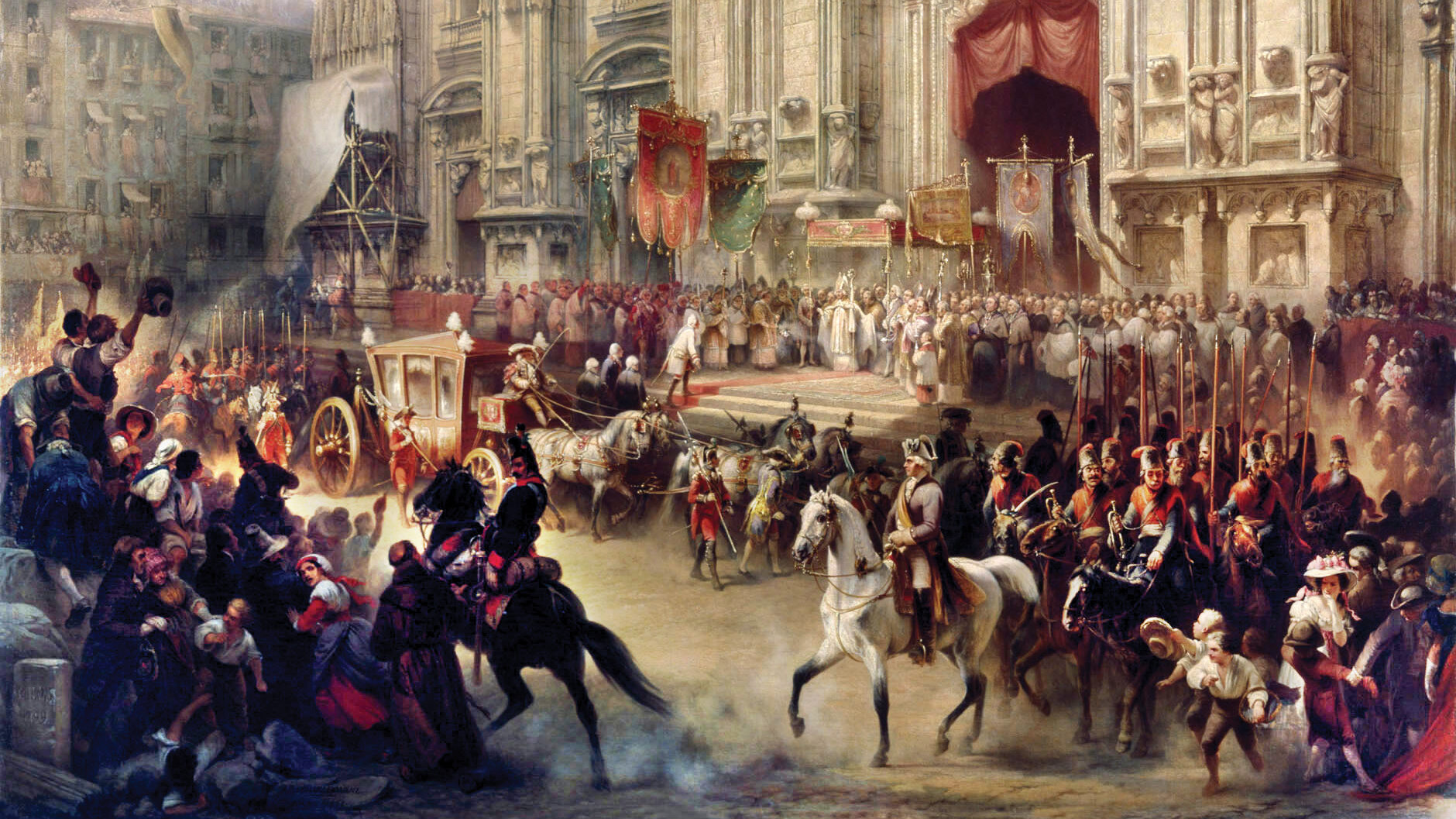
The task of dealing with Gardanne’s brigade, which held Novi, would fall to Bagration’s advance guard deployed in the center. Some of Gardanne’s men manned the battlements of Novi’s medieval wall, while others were deployed in the rough ground adjacent to the town.
The Austrians advanced against the French left with great fanfare. Drummers beat cadence that could be heard in the French camp. Kray had ordered three battalions, one of which were fleet-footed Croats, under Maj. Gen. Friedrich von Seckendorf to peel off from the main body and attempt to outflank the enemy by marching up the Riasco valley. After they departed, the Austrians went from column into two long lines that stretched for more than a mile. While Bellegarde on the outside marched against General of Division Emmanuel de Grouchy’s division, Ott’s division on the inside made directly for General of Division Louis Lemoine’s division adjacent to it. The French watched as two long lines of white-uniformed Austrian infantry advanced uphill to engage them.
When French trumpeters sounded the alarm, French musketeers had rushed to form up as quickly as possible. Unprepared to defend against the attack of Ott’s regular infantry, which was supported by massed Austrian artillery, the line infantry of General Louis Lemoine’s Division of the French left wing began to give ground in the face of the determined attack. Austrian artillery shells crashed among the French infantry on the high ground, sewing confusion and causing casualties. The Austrian crews worked their guns with great fury to buy time for the infantry to work their way uphill. A portion of Ott’s infantry gained the summit and poured a hot fire into Lemoine’s infantry before it had finished ordering its ranks to repulse the attack.
To the left of Lemoine, Grouchy’s line infantry had not formed into line of battle by the time Bellegarde’s division closed with them. Fortunately for the French, both Bellegarde and Ott both had considerable trouble initially getting their troops through the terraced vineyards on the northwestern slopes of Monte Mesma. In some places, the Austrian grenadier battalions had to switch from line back to column to make their way upwards towards the summit of the plateau.
While Moreau oversaw the operations in front of Novi, Joubert rode up to observe the Allies’ opening assault. Furious that Grouchy had not pressed all of his troops into defending the key ground north of Pasturano, Joubert took action to remedy the situation. The young commander-in-chief had not yet learned that he was not to lead his troops into action like a brigade commander, as he had done while serving under Bonaparte. After rallying a section of the French line during the Austrians first charge, Joubert had summoned the 26th Light Demi-Brigade, one of Grouchy’s units made up of French tirailleurs who skirmished in front of the line infantry. He rushed them forward as part of a counterattack, and ran headlong into an Austrian volley that killed him instantly. His slain body, which French chasseurs recovered, was taken to Novi.
Fortunately for Grouchy, the 4,800 troops of the infantry reserve of the left wing, which were organized into two brigades, were deployed behind Grouchy. Brigade commanders Bertrand Clausel’s and Louis Partouneaux sent their troops to assist Grouchy, as well as help contain the Austrian flanking column advancing on Pasturana.
Meanwhile, a running cavalry clash erupted when French General Antoine Richepanse, commanding the five regiments of the left wing’s cavalry reserve, raced downhill to block the attempt by Seckendorf to lead his mixed force of Croat infantry and Austrian hussars and dragoons east through the Riasco valley to capture Pasturana. The two sides vying for control of Pasturana were evenly matched, but Richepanse’ cuirassiers had to fight furiously to repulse the flanking maneuver. Some of the infantry from the French reserve moved south to reinforce Richepanse’s hard-pressed horsemen.
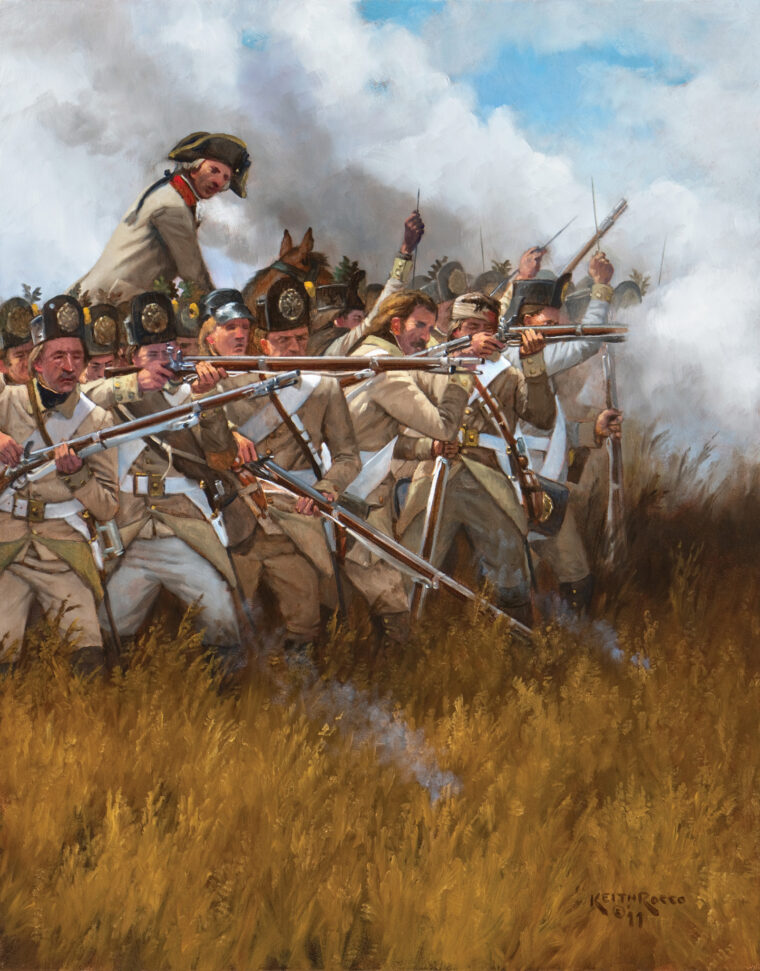
By mid-morning Kray’s attack against the French left had stalled. Kray requested reinforcements from Bagration’s 5,700-strong advance guard, but the young Russian general declined to send him any troops for he was anxiously waiting for General Wilhelm Derfelden’s 6,100-strong corps that was conducting a forced march to join in the attack on the French center. Suvorov had arrayed his forces in depth between Novi and Tortona, and he had sent orders at dawn for all of the troops to march as quickly as possible to Novi. Derfelden set off due south with his Russian Corps for Novi. Melas, whose Austrian corps was situated to the northeast in the Scrivia valley, also set off on a rapid march to the battlefield.
Maj. Gen. Mikhail Miloradovich arrived on the field with the lead elements of his 3,700-man division, the vanguard of Derfelden’s corps, at 10:00 a.m. When this occurred, Suvorov ordered Bagration to advance on Novi. He informed the commander of the Russian advance guard that Miloradovich would go into action on his right.
Bagration’s crack grenadiers and jagers would have to advance into the teeth of the French artillery. They advanced in four columns pointed like daggers directly at the heart of the French line. The commander of the artillery had arrayed his guns with the heavier caliber on the summit, the medium caliber on the slopes, and the small caliber guns at the base of the slopes. They belched flame as they hurled their ordnance into the midst of the green-jacketed Russian troops. The iron shot cut bloody swaths in the front ranks of Bagration’s forces, disemboweling some soldiers and horribly maiming others. But still the stout-hearted Russians came on.
General Gardanne, who had commanded two demi-brigades, had been entrusted with the defense of Novi and had arrayed his men in an arc in front of the town. Some of his men had protected positions on the battlements of the medieval-era walls, and others in outlying houses. A sheer cliff on the north side of the plateau prevented the Russians from attacking directly towards the town. When the Russians began to ascend the slopes on either side of the precipice, Gardanne moved his battle line slowly downhill to prevent the Russians from getting a foothold on either side of the town. The Russians found the going hard, for they faced the same dilemma as the Austrians; that is, they had to fight their way through broken terrain to gain the summit. Moreau stripped infantry units that were not engaged from Saint-Cyr’s right wing to reinforce Gardanne.
By late morning, Bagration’s Russians had managed to gain the summit. At that point, Russian soldiers manhandled guns up the slopes to blast the walls of the town in preparation for an infantry assault. The Russians, though, found that their guns were not powerful enough to open breaches in the sturdy walls. Bagration decided to move his infantry into position for an assault on the town from the west. As they moved in column through cultivated ground and orchards, French tirailleurs concealed in vineyards and farm buildings thinned their ranks. The situation deteriorated for Bagration. General Pierre Garnier de Laboissier’s troops surged across the heights to assail Bagration’s position on the summit. Yet another fresh division, that of General Francois Watrin, moved rapidly downhill to attack Bagration’s exposed left flank at the base of the mountain. Watrin’s soldiers, who had been roughly handled by the victorious Allies at Trebbia, were eager to settle the score. Watrin’s men poured a storm of lead into left regiments of Bagration’s force sending them reeling backwards.
Bagration persevered, and by midday, the advance elements of Miloradovich’s division compelled Watrin to give ground. Meanwhile, Bagration’s grenadier regiments on the high ground began charging Gardanne’s troops defending Novi. With their artillery ineffective, Bagration resorted to Suvorov’s maxim of cold steel. The Russians began making repeated charges against Novi in an attempt to fight their way into the city. The Russians pried the French from the vineyards, gardens, and houses outside the town. By early afternoon, Gardanne’s soldiers had either retreated into Novi to man the battlements or had withdrawn to defensive positions just south of it.
Before Bagration’s grenadiers and jagers could resume their attack, though, Gardanne’s troops emerged from the town determined to drive Bagration’s grenadiers off the summit of the ridge. The sound of crashing musketry reverberated across the plateau and great clouds of battle smoke hung around Novi making it difficult to pinpoint enemy positions. Miloradovich’s troops had gone into action in the late morning on Bagration’s right. They swept up the slope with drums beating and smashed into Laboissier’s exhausted troops, who reeled under the impact of an attack by fresh troops.
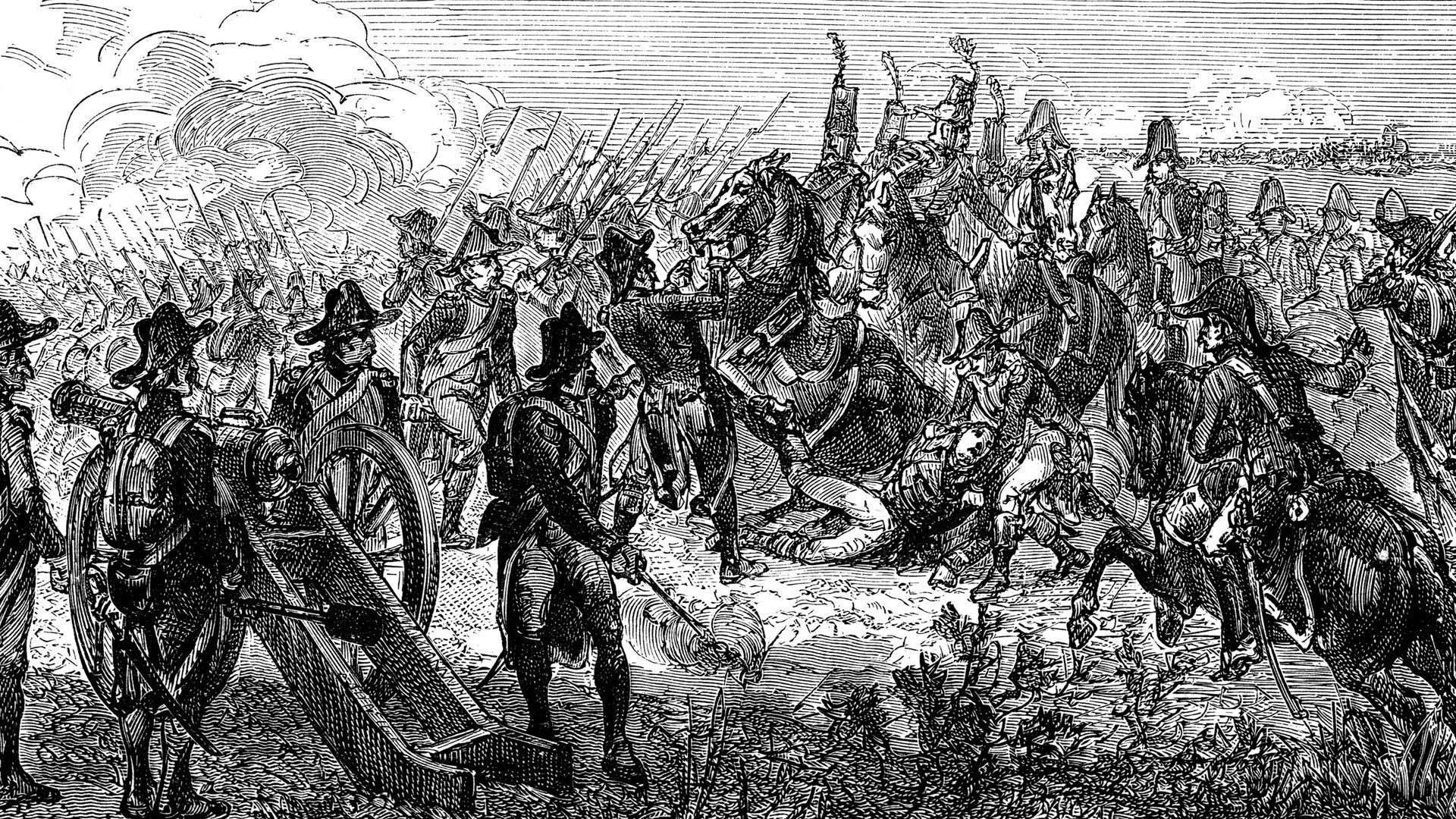
The tide shifted in favor of the Allies at that point. Kray had spent the past two hours reorganizing his troops, and they resumed their advance at 11:00 a.m. They dislodged the infantry of Grouchy and Lemoine from their positions. As they followed up their attack, they encircled two French battalions and captured General Louis Partouneaux, the commander of one of the two infantry brigades of the left-wing reserve. The summit and slopes of the plateau were littered with the dead bodies of French and Allies alike by midday. A brief lull ensued, but the carnage resumed when more Russians arrived on the field of battle. Derfelden arrived with his old division, which he led in an assault against the weakened French right on the east side of Novi.
The French reached their breaking point when Suvorov hurled his second Austrian corps under Melas at Saint-Cyr’s troops east of Novi in the late afternoon. Upon his arrival, Melas deployed the bulk of his grenadiers and jagers against Saint-Cyr’s weakly held line. At the same time, he Maj. Gen. Johann Nobili, with 1,400 fusiliers and 200 dragoons, conducted a flanking maneuver to engage Dabrowski’s Polish troops at Seravalle. This left Melas with nine grenadier battalions in two brigades, which he sent to attack Novi from the east.
Seeing the threat that Melas posed to his right flank, Moreau ordered Watrin to shift his three brigades to cover the eastern approaches to Novi atop the plateau. The Austrians easily gained the summit of the plateau since Watrin was not defending the crest of the ridge. Once atop the plateau, General Franz Lusignan, whose brigade had five grenadier battalions, assailed Watrin’s left from the northwest, while Maj. Gen. General Johann Loudon launched repeated charges against Watrin’s right from the southwest with his four grenadier battalions.
Watrin’s troops, who had been bloodied earlier in the day in their brawl with Bagration’s Russians, could not withstand repeated charges by the Austrian grenadiers. In a desperate attempt to stabilize his deteriorating line, Saint-Cyr hurled the crack 106th Demi-Brigade from his infantry reserve against the Austrians, but they could not stabilize the situation.
Sensing victory near at hand, Suvorov ordered a general attack against the French positions at 4:00 p.m. Both Kray and Bagration redoubled their efforts, while Melas continued pressing his attacks. Kray’s soldiers carried out their tenth assault of the day. Melas then committed his reserve brigade, which was commanded by Maj. Gen. Anton Mitrowski, against Watrin’s exhausted troops. Mitrowski’s led his troops around Watrin’s right flank. This put them squarely behind the French line east of Novi.
Derfelden, who had led his corps into action to support Bagration, precipitated the collapse of the French defense of the town of Novi. With fresh support, Bagration’s grenadiers burst through the upper gate of the town. Although they faced a withering fire from French musketeers in protected positions, the French found themselves overpowered. Some of Gardanne’s men managed to escape, but scores fell prisoner to the victorious Russians.
On the ground to the east of Novi, Watrin ordered his troops to cut their way out to the south. The only French division that remained intact and effective at that point was French General Louis Colli’s 4,000 troops who were desperately trying to hold the ground west of Novi.
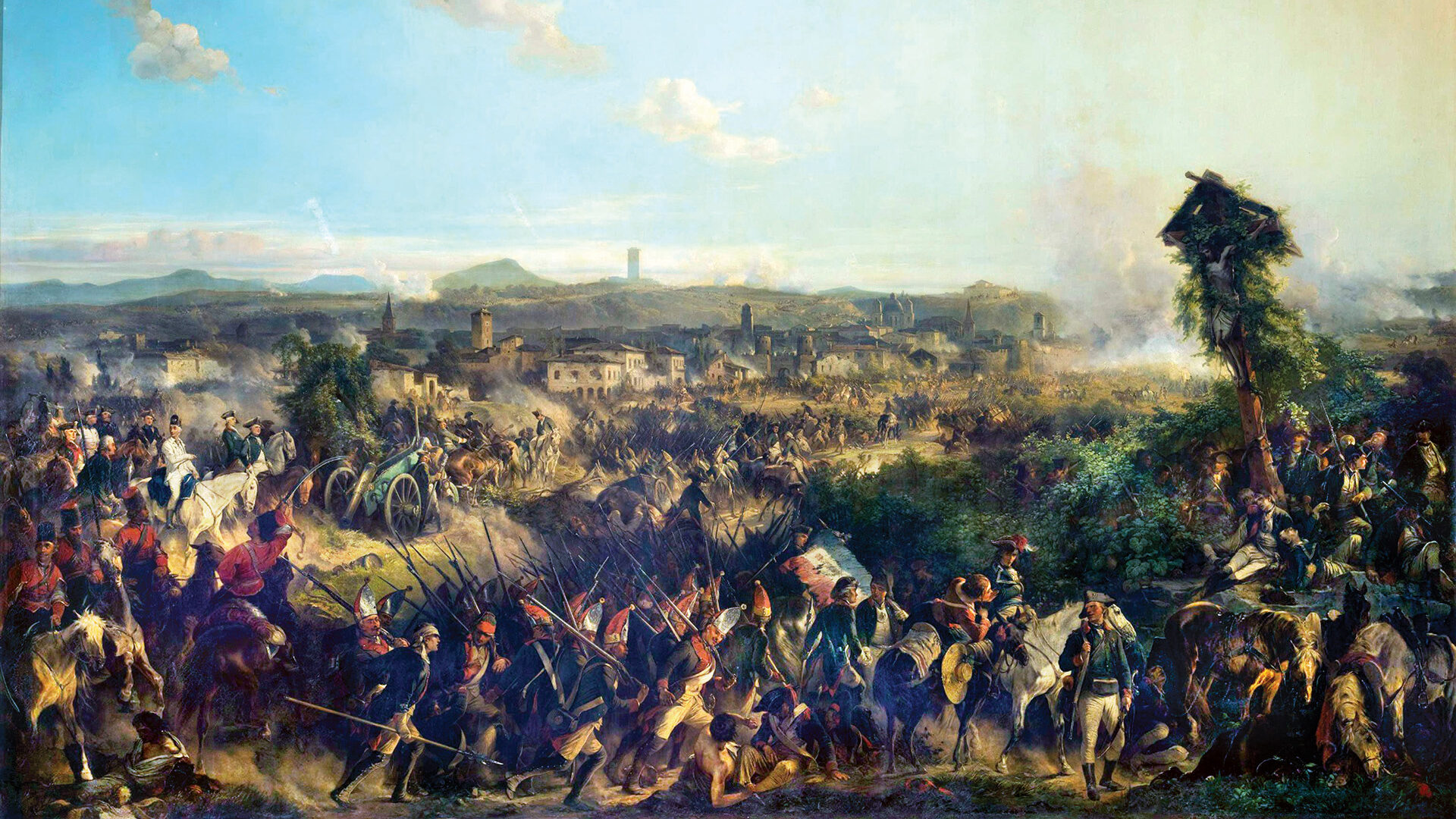
By 5:00 p.m. the brigades and regiments on the French left and center were attempting to fight their way out of possible encirclement by the closing pincers of Kray’s corps and Derfelden’s corps. The survivors of the French left wing hoped to take the road that led south from Pasturano to Gavi. In the center, the survivors of Watrin’s division sought to escape by way of the road that led south across the plateau from Novi to Gavi.
Austrian hussars got ahead of the fleeing French foot soldiers and blocked the mouth of a gorge on the Pasturano-Gavi Road. When Austrian infantry caught up with the trapped French, they fired into the milling mass of men. The encircled French surrendered. The Allies succeeded in capturing generals Perignon, Grouchy, and Colli.
The pursuit, which Suvorov had encouraged to make the Allied victory complete, had continued for several hours after nightfall. The French suffered 12,000 killed and wounded and 4,600 captured. The Allies lost 6,000 men.
In the wake of his decisive victory at Novi, Suvorov was hailed as a hero throughout the capitals of the Great Powers. King George III of England toasted Suvorov’s health at a public event. The tsar and the Italians both bestowed high honors on Suvorov for his achievements.
Unfortunately, the defeat of an Austro-Russian army at the hands of French General Andre Messana at Zurich in September resulted in Emperor Francis ordering Suvorov to march north to shore up the deteriorating Allied strategic situation in Switzerland.
His subsequent epic trek with his three corps across the Alps, in which he battled French forces in the extreme conditions of an Alpine winter, enhanced his fame even more. But the Russians quit the Second Coalition in spring 1800. Bonaparte returned to Italy and defeated the Austrians at Marengo in June 1800.
Suvorov’s brilliant campaign of 1799 in northern Italy completely undid Bonaparte’s conquests of 1796-1797. Although the Russian marshal’s army was checked on its march through the Alps, it was not defeated. For that reason, Suvorov remained undefeated throughout his long military career. His Italian campaign, of which the victory at Novi was the pinnacle, remains one of the greatest campaigns of the Napoleonic era.
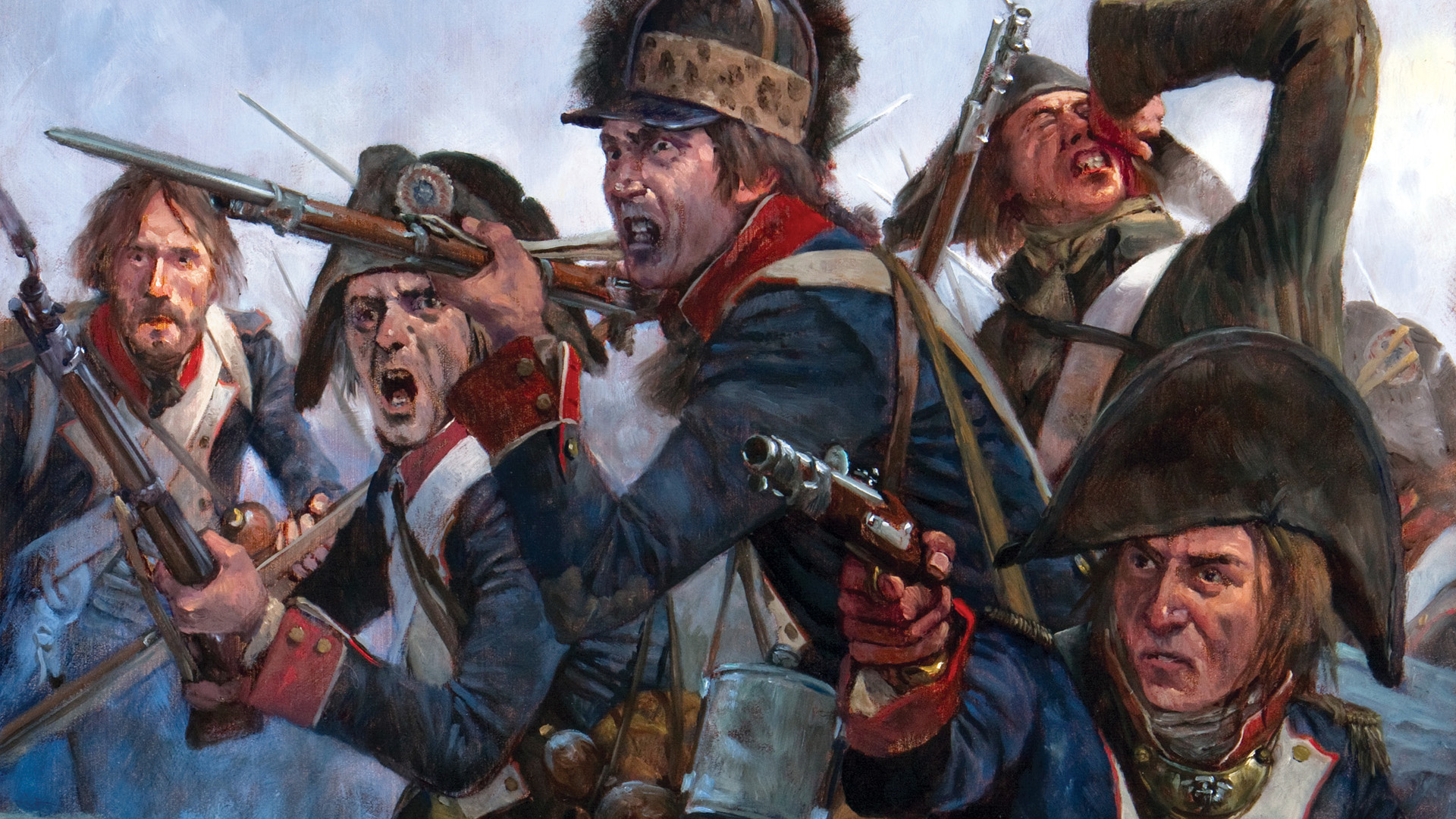
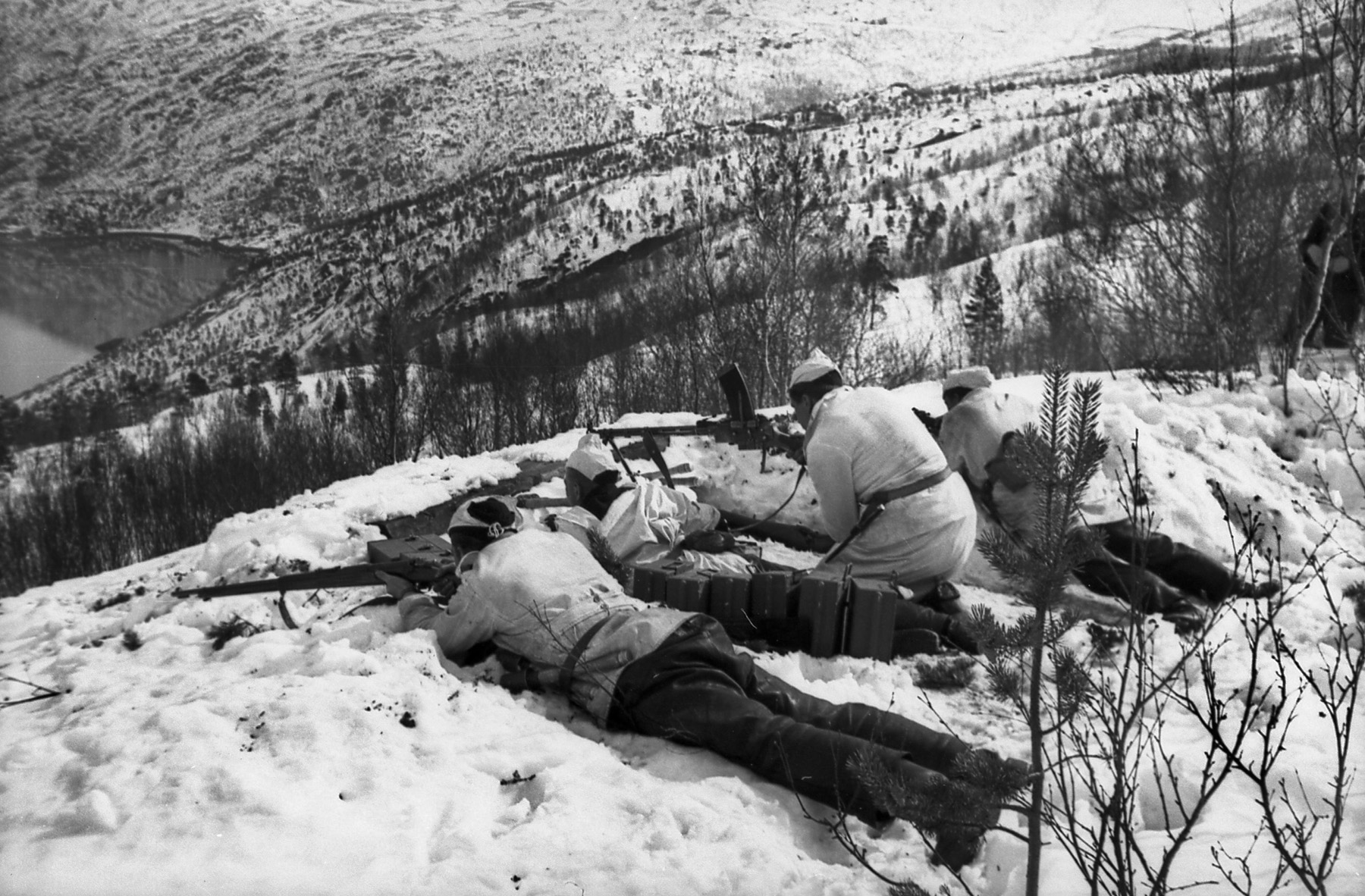
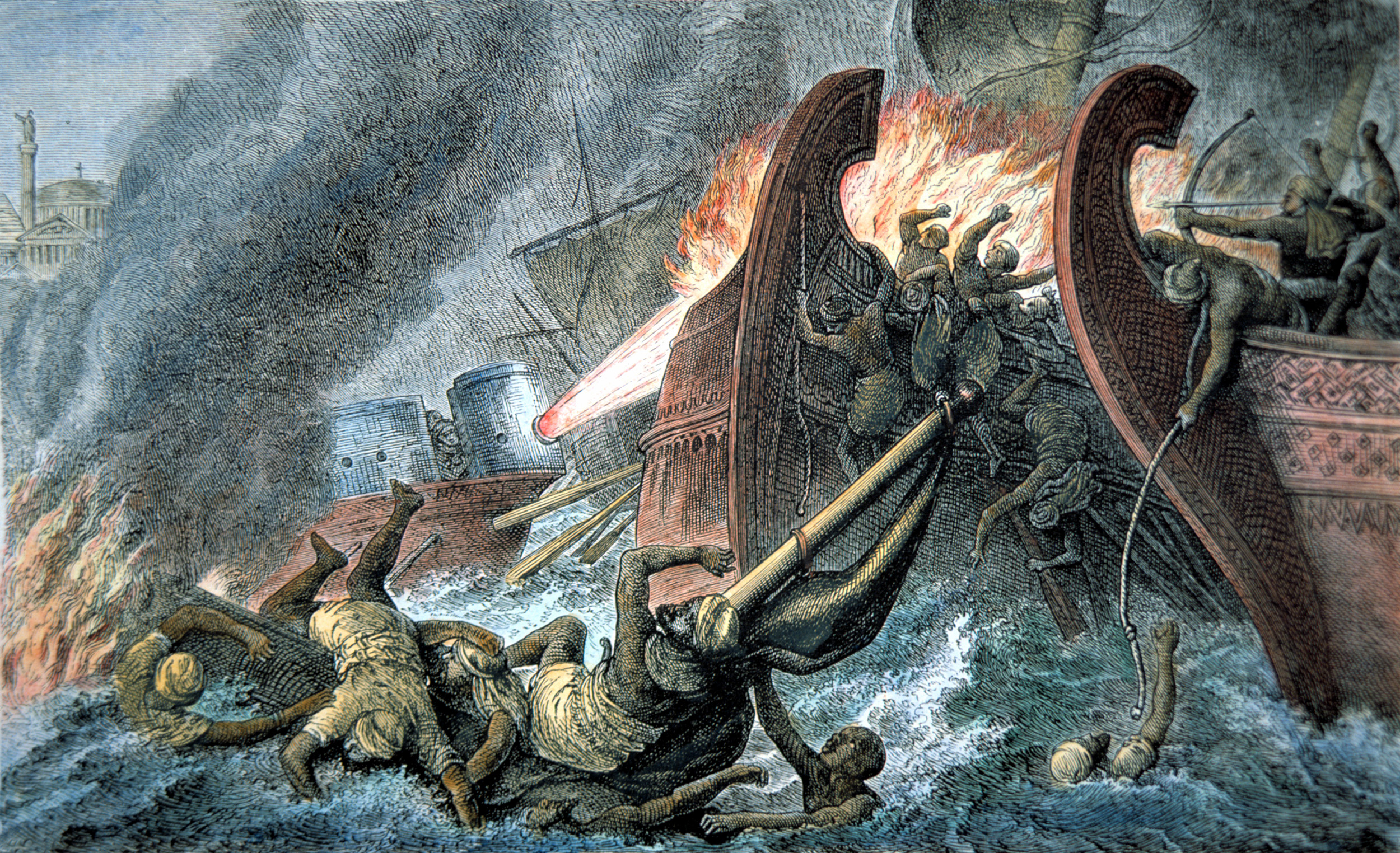
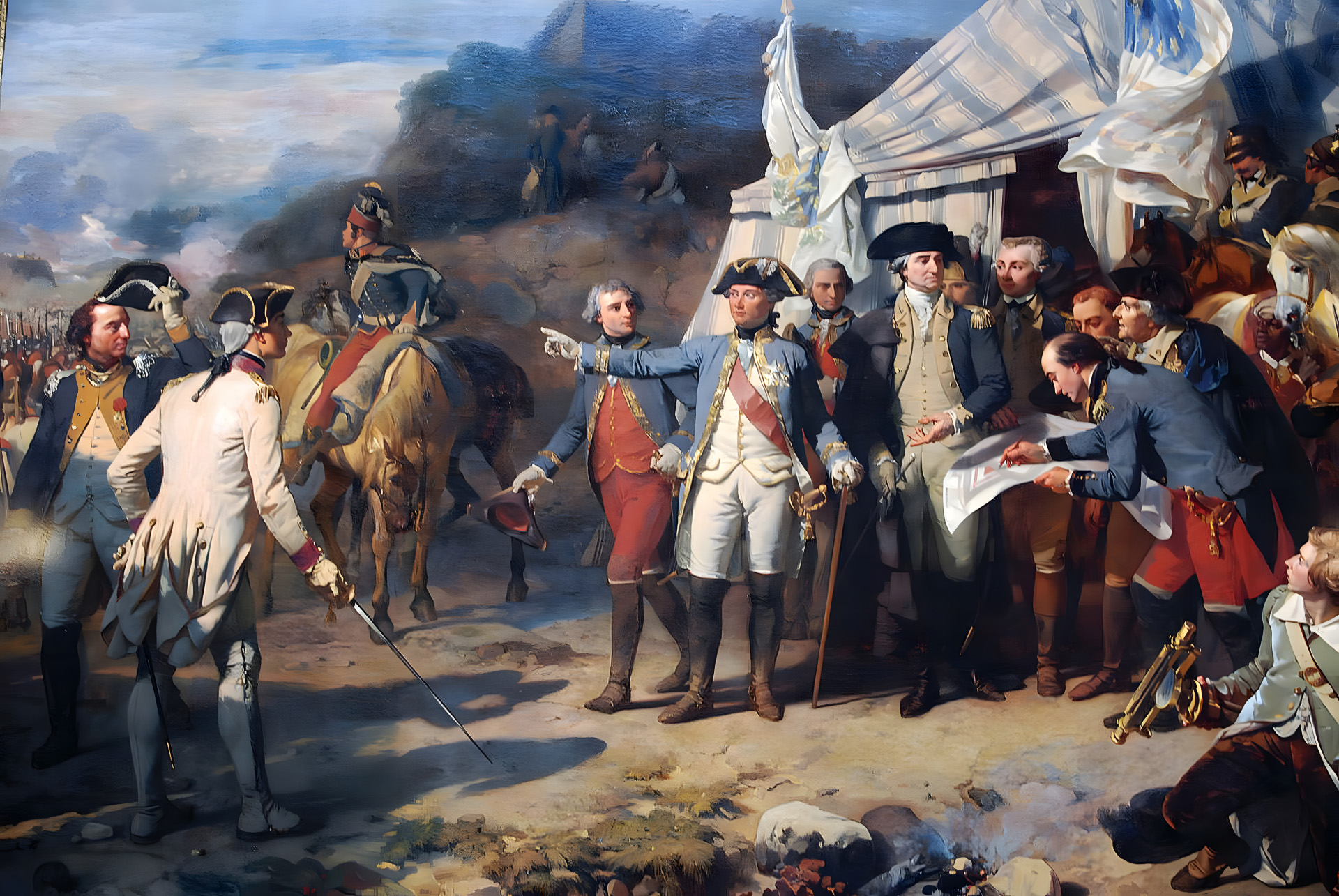
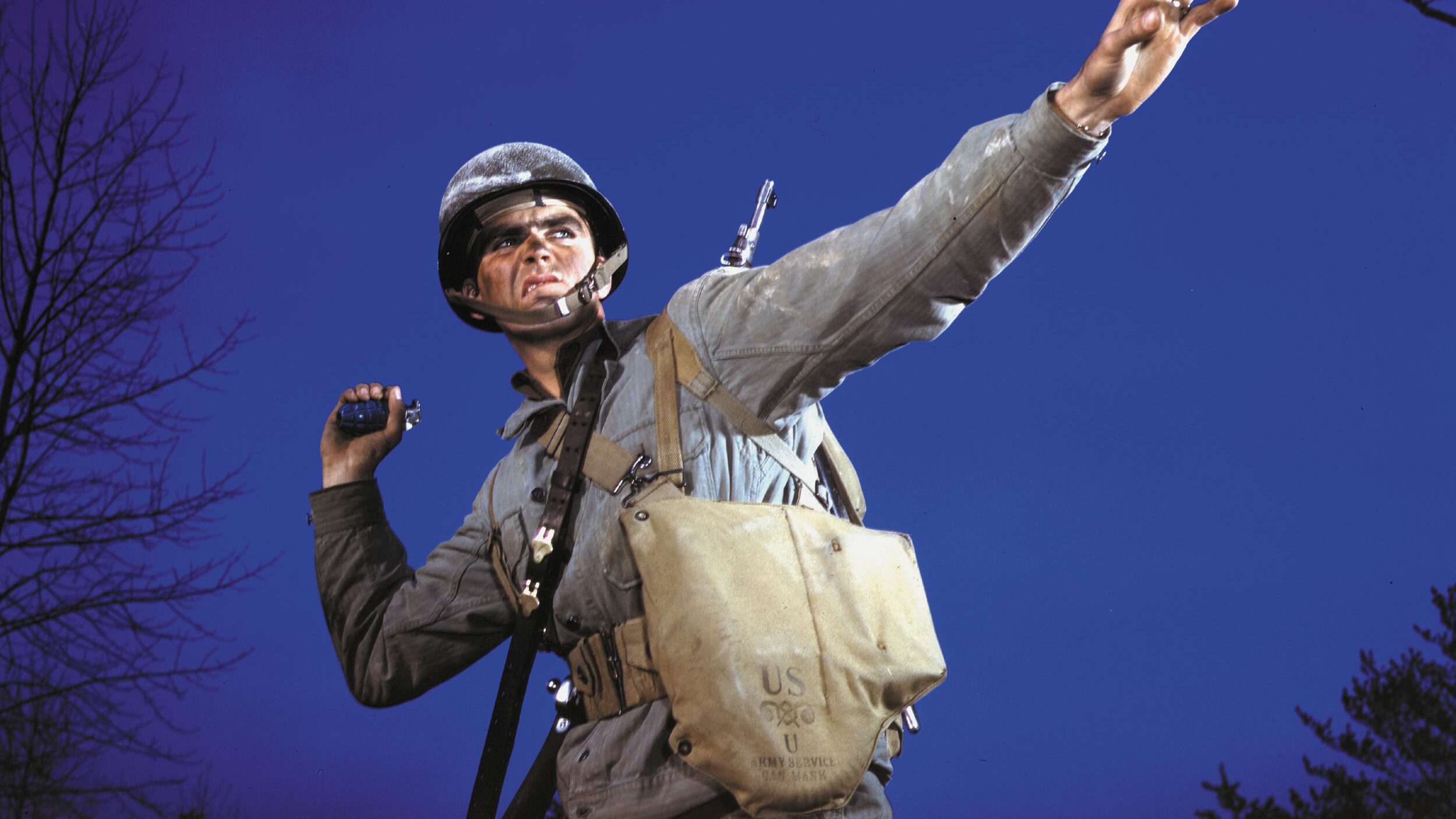
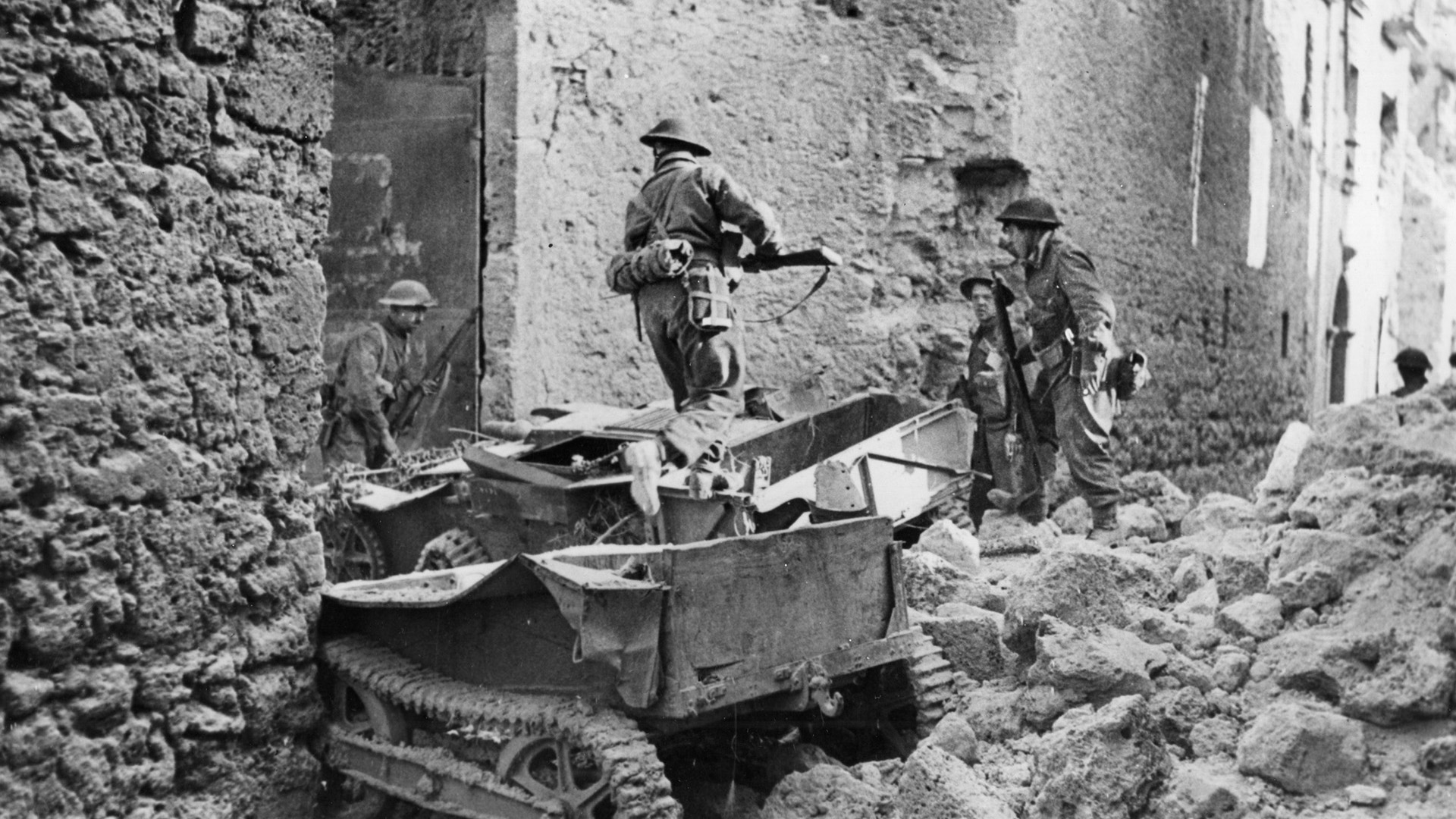
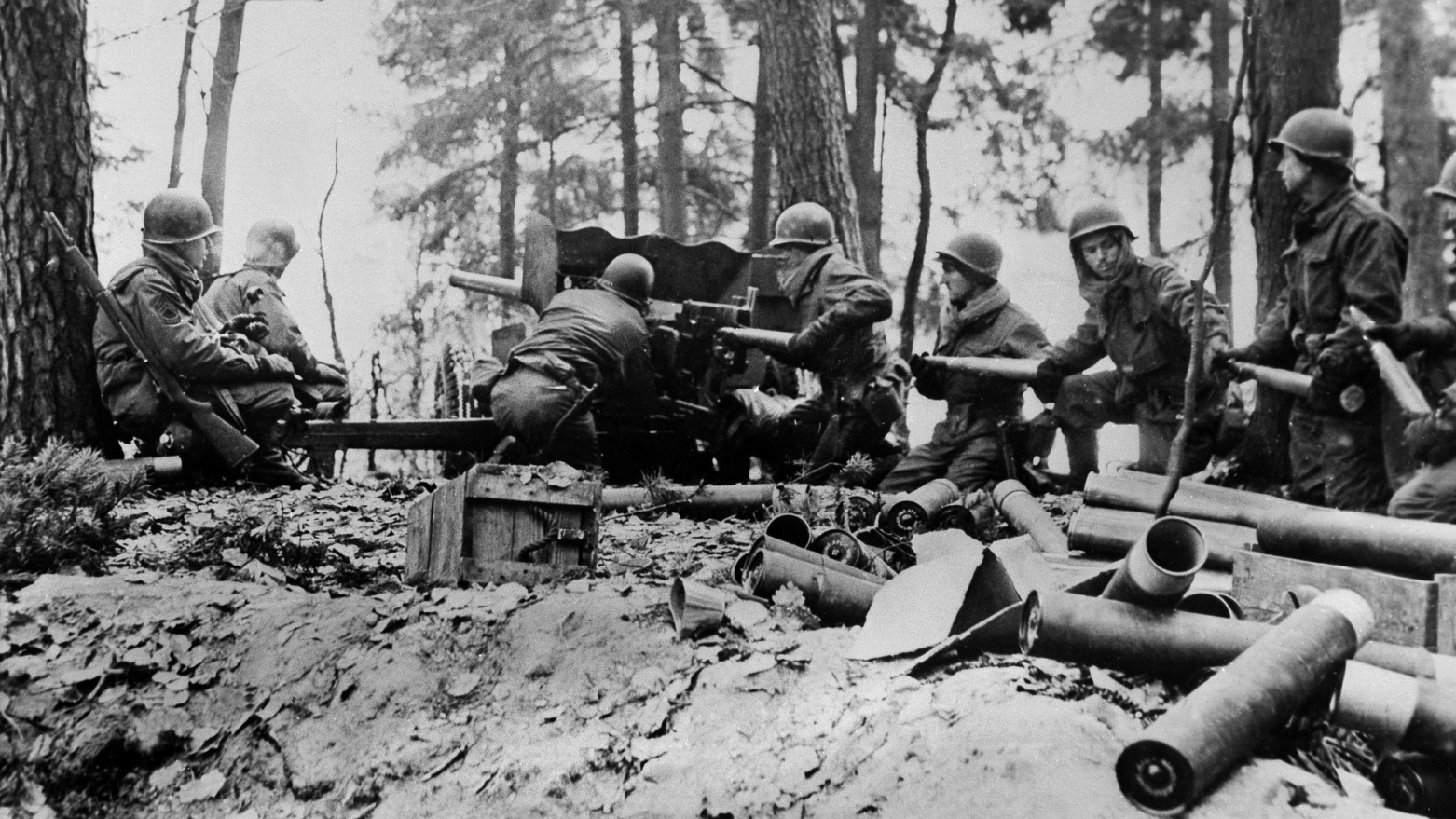
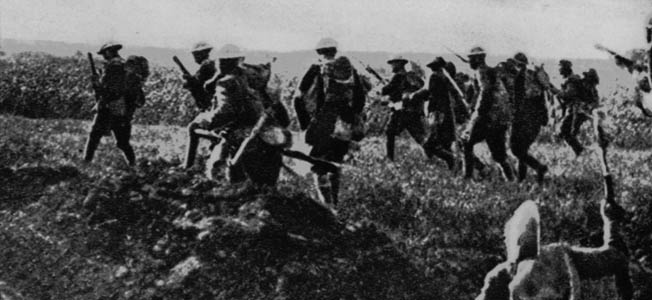
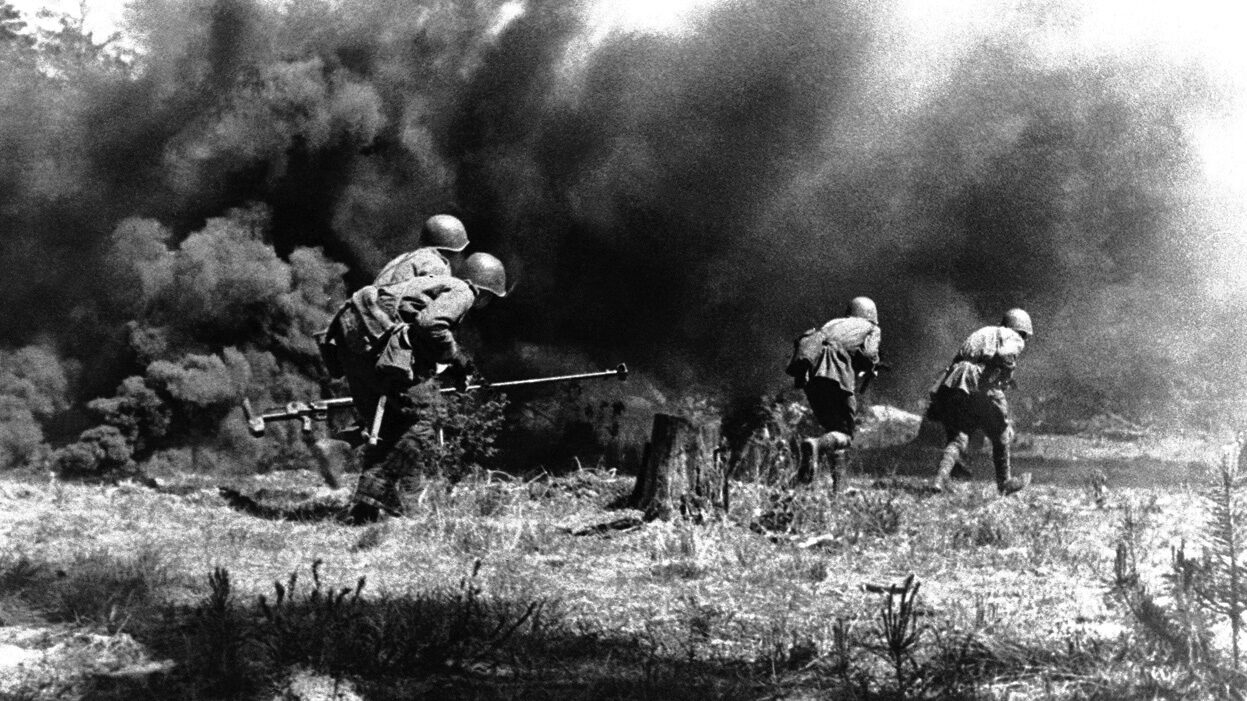
Join The Conversation
Comments
View All Comments